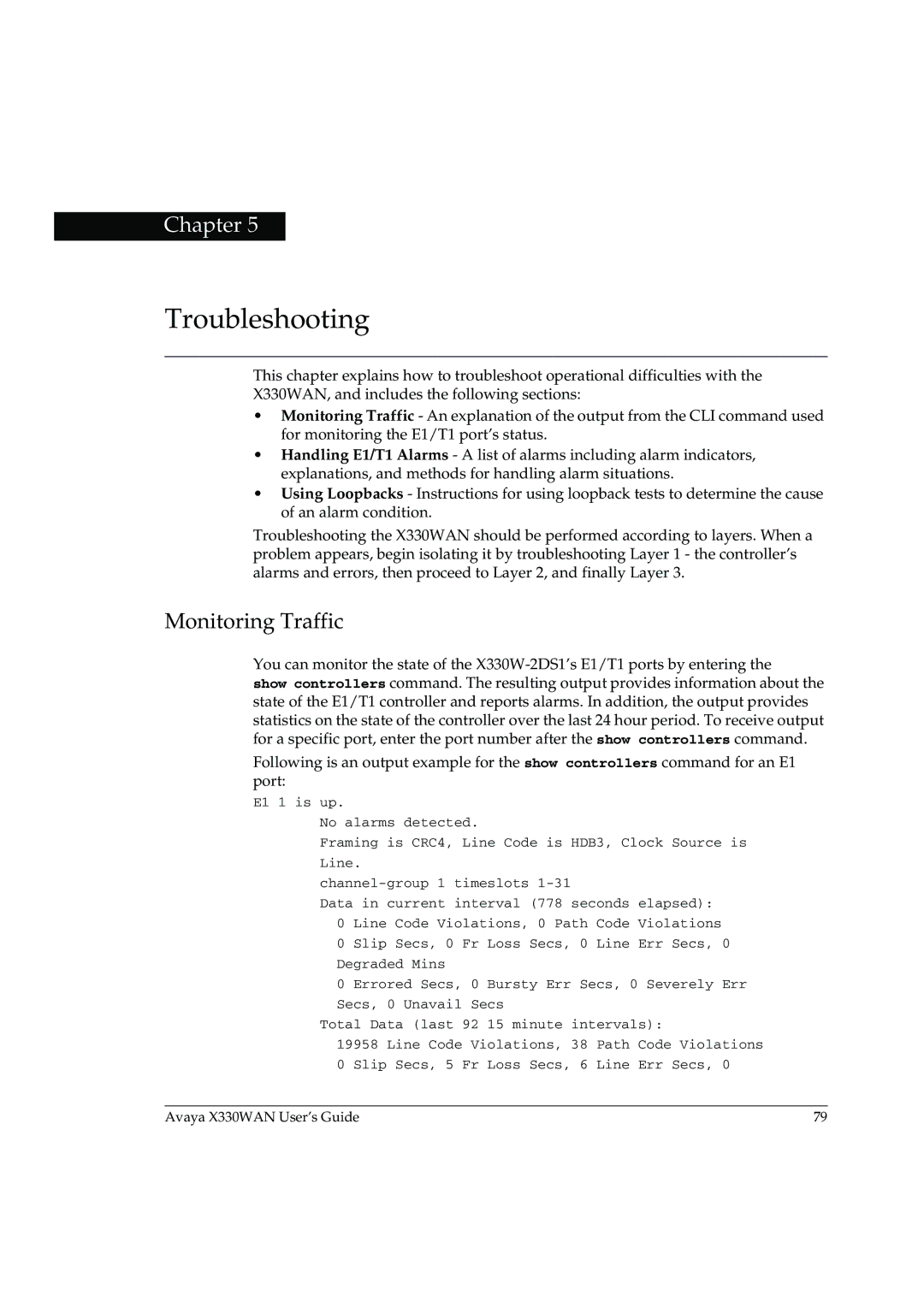
Chapter 5
Troubleshooting
This chapter explains how to troubleshoot operational difficulties with the X330WAN, and includes the following sections:
•Monitoring Traffic - An explanation of the output from the CLI command used for monitoring the E1/T1 port’s status.
•Handling E1/T1 Alarms - A list of alarms including alarm indicators, explanations, and methods for handling alarm situations.
•Using Loopbacks - Instructions for using loopback tests to determine the cause of an alarm condition.
Troubleshooting the X330WAN should be performed according to layers. When a problem appears, begin isolating it by troubleshooting Layer 1 - the controller’s alarms and errors, then proceed to Layer 2, and finally Layer 3.
Monitoring Traffic
You can monitor the state of the
show controllers command. The resulting output provides information about the state of the E1/T1 controller and reports alarms. In addition, the output provides statistics on the state of the controller over the last 24 hour period. To receive output for a specific port, enter the port number after the show controllers command.
Following is an output example for the show controllers command for an E1 port:
E1 1 is up.
No alarms detected.
Framing is CRC4, Line Code is HDB3, Clock Source is
Line.
Data in current interval (778 seconds elapsed): 0 Line Code Violations, 0 Path Code Violations 0 Slip Secs, 0 Fr Loss Secs, 0 Line Err Secs, 0 Degraded Mins
0 Errored Secs, 0 Bursty Err Secs, 0 Severely Err
Secs, 0 Unavail Secs
Total Data (last 92 15 minute intervals):
19958 Line Code Violations, 38 Path Code Violations
0 Slip Secs, 5 Fr Loss Secs, 6 Line Err Secs, 0
Avaya X330WAN User’s Guide | 79 |
